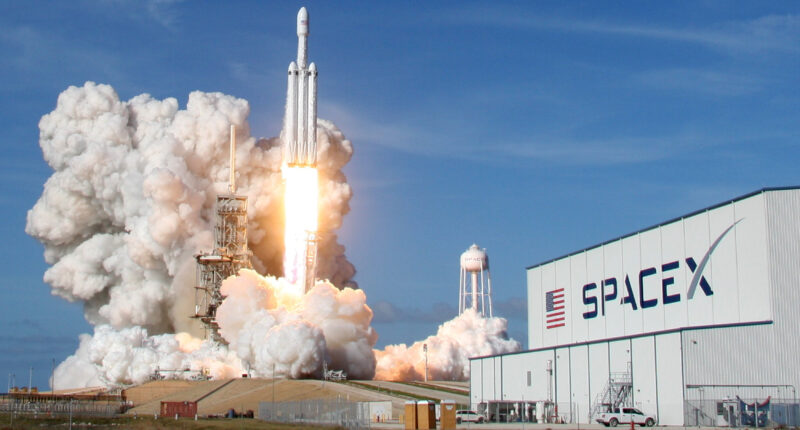SPACEX is set to launch the world’s largest communications satellite in the early hours of tomorrow morning, ahead of a top-secret launch in September.
The satellite weighs an eyewatering 9.2 metric tonnes (9,200kg) – about the same weight as six male hippopotamus.
It will be heaviest satellite ever launched, and will require SpaceX’s Falcon Heavy rocket to get it up into Earth’s orbit.
The Falcon is the most powerful operational launcher in the world, to date.
The heaviest geostationary communications satellite previously launched weighed some 7,076kg.
The launch time is currently set for 3:04am UTC (4:04am BST) from Nasa’s Kennedy Space Centre in Florida.


It comes ahead of a top-secret mission in September known as USSF-52, which will also be spearheaded by SpaceX’s Falcon Heavy rocket.
The rocket is set to carry a “classified payload”, also from the Floridian space base.
Little else is known about the mission as of yet.
It’s a big year for Elon Musk’s SpaceX and its prized Falcon Heavy.
Most read in Tech
SpaceX is also preparing to launch a commercially built lunar lander, which should be destined for the Moon before the end of the year.
In what is expected to be the Falcon’s final lift-off of 2023, SpaceX will help Nasa and Astrobotic, the company behind the lunar lander, search for water in the Moon’s south pole.
Astrobotic’s 430kg Griffin lander will haul Nasa’s Volatiles Investigating Polar Exploration Rover, or VIPER, to sample ice embedded in the Moon’s crust.
Fully fuelled, the Griffin lander will be as heavy as some of the largest commercial communications satellites, according to Daniel Gillies, Astrobotic’s mission manager.
This will be a much smaller payload in comparison to the hefty 9,200kg satellite.
“There are a number of technical parameters,” Gillies said in an interview with Spaceflight Now.
“Obviously going to the moon is a little bit different than, say, doing a GTO (geosynchronous transfer orbit) mission or doing a LEO (low Earth orbit) mission.
“So there’s just a lot that has to be considered.”
Best Phone and Gadget tips and hacks

Looking for tips and hacks for your phone? Want to find those secret features within social media apps? We have you covered…
We pay for your stories! Do you have a story for The Sun Online Tech & Science team? Email us at [email protected]










